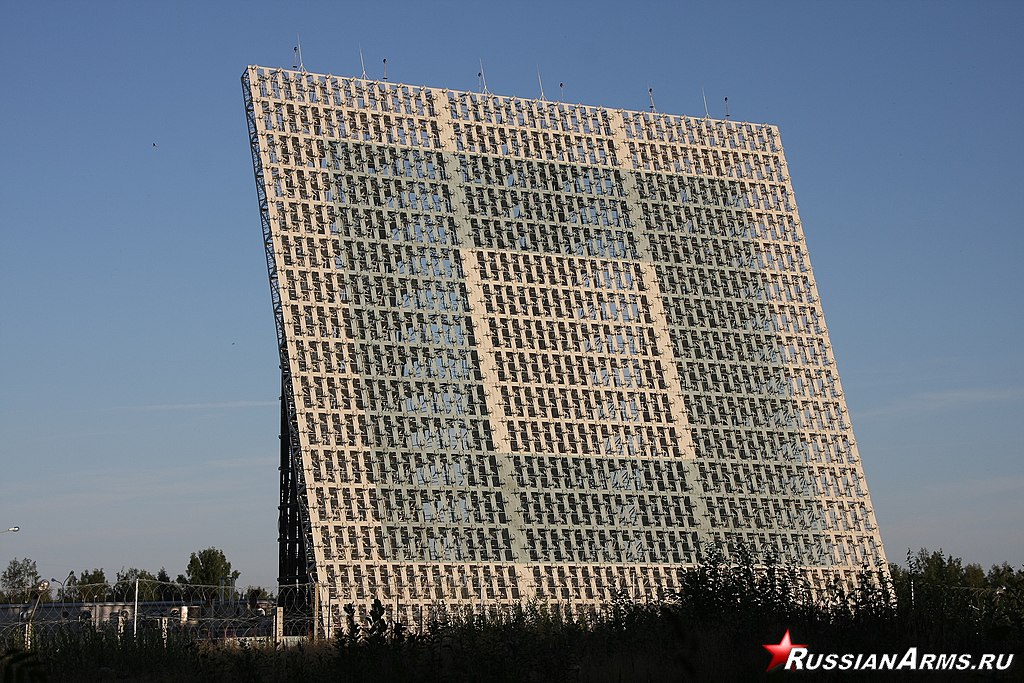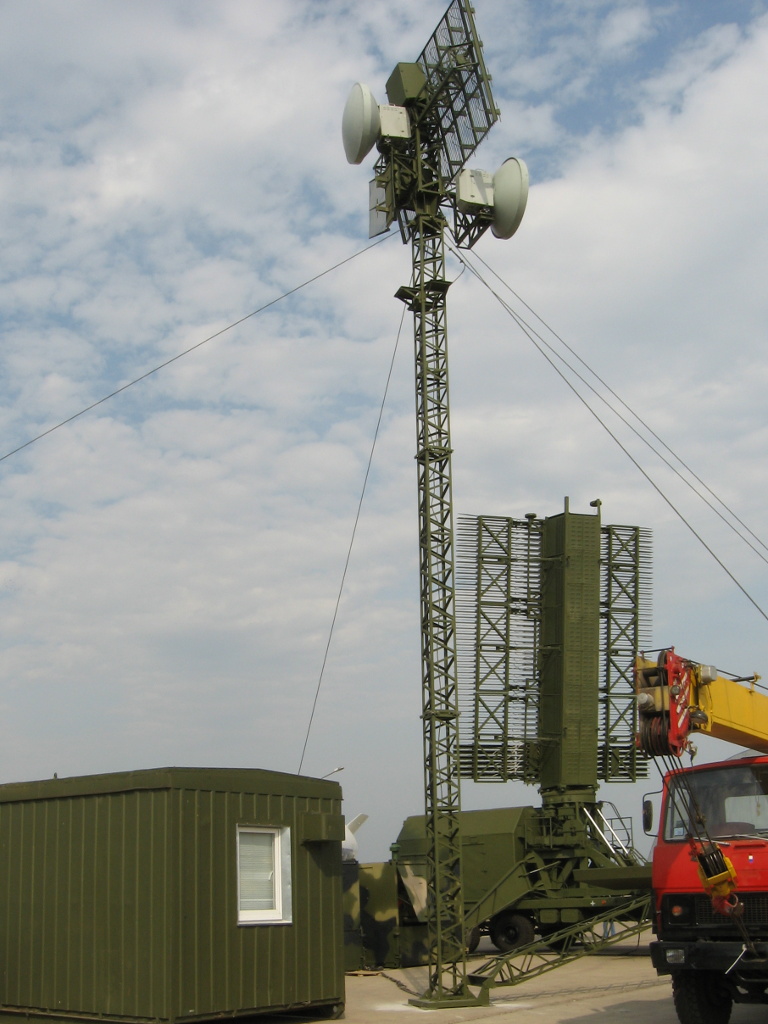
In the third part of Armada’s Russian IADS Redux series demystifying the country’s Integrated Air Defence System we examine the Daryal, Voronezh, Nebo, Struna and Container radars.
The Russian Integrated Air Defence System (IADS) employs several ground-based air surveillance radars to watch Russia’s airspace and the air approaches to the country. The first two articles in our Russian IADS Redux series looked at the Resonance-N/NE and 12A6 Sopka-2 systems. This article studies the fixed Daryal, Voronezh and 29B6 Container radars. It also examines the deployable 52E6MU Struna-1 and 55Zh6M Nebo-M systems.
Ballistic missile detection is the responsibility of the Russian Air and Space Force’s (RASF) Daryal Very High Frequency (VHF: 150 megahertz/MHz to 200MHz) Ballistic Missile Early Warning (BMEW) radar. This is located at the Pechora radar station, north-western Russia. The radar has an instrumented range of 3,240 nautical miles/nm (6,000 kilometres/km) and is the only Daryal system in use.
Voronezh
The Daryal radar is joined by the more numerous Voronezh radar series. Several of these radars have been deployed around Russia. For example, the Russian Ministry of Defence may have built a new 77YA6M Voronezh-M radar in Ukraine’s Crimea territory which Russia occupied in 2014. This version of the radar transmits on a frequency of 150MHz to 200MHz and has a reported range of 3,239nm (6,000km). A 77YA6DM Voronezh-DM BMEW radar is located at the Armavir Radar Station in southwest Russia. Unlike the 77YA6M this latter radar has a range of 5,399nm (10,000km) and transmits Ultra High Frequency (UHF: 300MHz to three gigahertz) signals. Other Voronezh types include the 77YA6VP Voronezh-DP which, like the 77YA6M, also transmits in VHF. The V/UHF frequencies of these radars have raised some eyebrows. One expert on Russian radars told Armada that these frequencies “always seemed suspicious to me given that the radar is credited with detection ranges normally associated with over-the-horizon radars transmitting in High Frequency (HF: three to 30 megahertz).”

These radars are positioned to cover the northern, western and southern approaches to Russia. Although primarily designed to detect and track incoming ballistic missiles, they may detect conventional air threats. The comparatively low frequencies used by these radars help detect and track aircraft with low Radar Cross Sections (RCSs). The Voronezh series probably does not provide the sharp accuracy surface-to-air missiles need to successfully intercept an air target. Nonetheless, they could provide information on the location of incoming aircraft and track these targets, sharing this data with RASF fighters.
Nebo
Beyond the Voronezh series the RASF is known to use the 55ZH6M Nebo-M (NATO reporting name Tall Rack) VHF (133MHz to 144MHz/216MHz to 225MHz) ground-based air surveillance radar. There are important distinctions between the Resonance-N/NE and the 557ZH6M: The former uses electronic beam steering while the latter’s antenna is mechanically steered. Russia’s Central Military District is thought to have a single 55ZH6M. The radar is believed to have an instrumented range of 378nm (700km), maximum altitude of 262,467 feet/ft (80,000 metres/m) and can track up to 200 targets simultaneously. A total of eleven 55ZH6M radars may have been delivered, possibly equating to two per Russian military district.
Sources familiar with the radar have disclosed to Armada that they are not usually permanently deployed. Instead, they would be rapidly deployed in times of crisis to plug gaps in existing radar coverage. The radars would also provide a degree of redundancy should other radars be destroyed. It is worth mentioning the 1L125 Niobium-SV ground-based air defence radar which is a variant of the 55ZH6M. This radar does not appear to be deployed as part of the Russian IADS. Instead, it supports theatre-level air defence above Russian land forces. To this end, several of these radars are currently deployed in the Ukrainian theatre of operations.

Struna
The 52E6MU Struna-1 ground-based air surveillance radars help bolster coverage over Moscow and its surrounding area. This VHF radar is designed for low altitude surveillance with its frequency bands optimised to detect low RCS targets. The radar has a reported range of 21.6nm (40km), an altitude of 32,808ft (10,000m) and is probably used to plug gaps in low altitude coverage.

Container
The 52E6MU is complemented by the 29B6 Container static HF ground-based air surveillance radar. The 29B6 is deployed as a strategic radar to provide early warning of incoming air targets. It has a reported range of 1,619nm (3000km) and a maximum altitude of 328,084ft (100,000m). The radar’s bistatic design means that its transmitter and receiver are located separately. It is thought that a single 29B6 has entered service. Its transmitting antenna is near the Gorodets, east of Moscow and the receiving antenna near Kovylkino, almost due south of the transmitter. The system is configured to provide surveillance of a bearing of 240 degrees. The 29B6 monitors the air approaches to western Russia from the North Atlantic Treaty Organisation’s eastern flank. Additional 29B6s were earmarked for delivery for installation near Zeya Amur in Russia’s far east. Additional plans called for similar radars to be installed in Russia’s European enclave of Kaliningrad in the Baltic. The RASF may eventually receive up to twelve systems.
Next month, Armada’s Russian IADS Redux series delves into the world of tactical datalinks used by the RASF to assist air operations.

by Dr. Thomas Withington
Read our other Russian IADS Redux articles:
- Russian IADS Redux Part-1: Resonating with Resonance
- Russian IADS Redux Part-2: Hilltop View
- Russian IADS Redux Part-4: Missing Link
- Russian IADS Redux Part-5: Reset Password?













